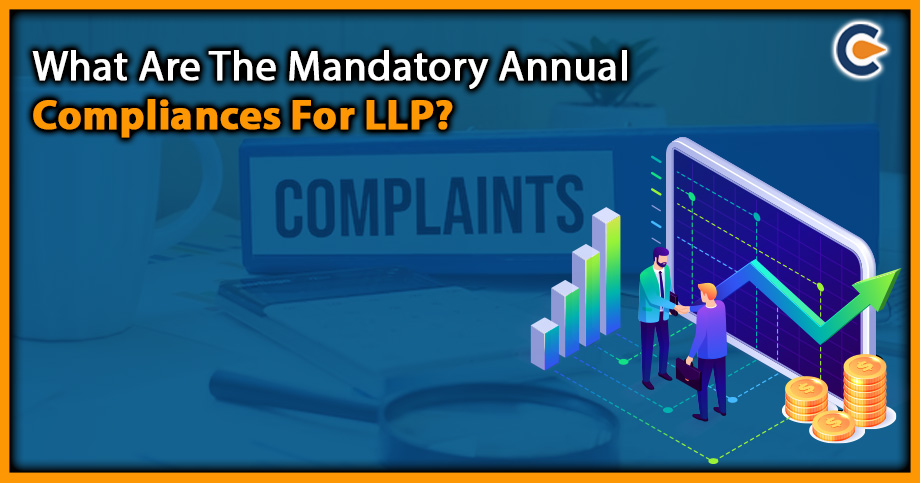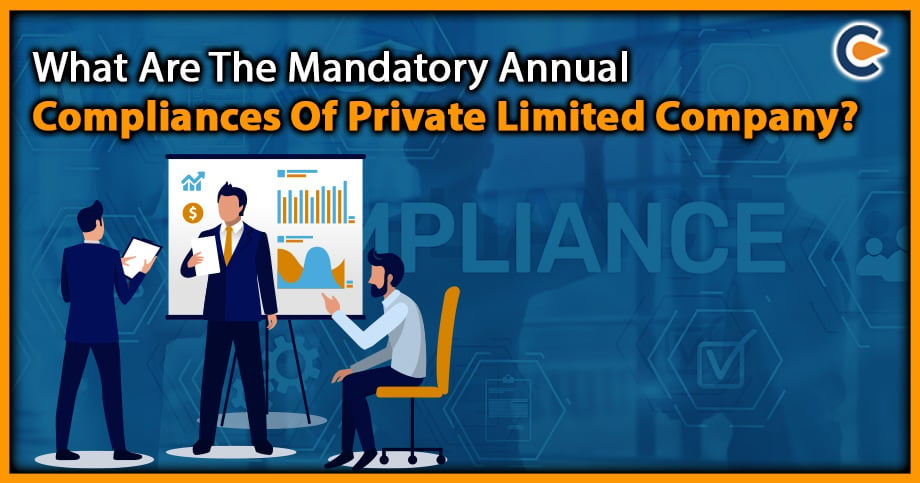In India, establishing a Public Limited Corporation is the best option for entrepreneurs considering extensive commercial operations. In India, a Public Limited Company must have a minimum of seven members in order to be formed, and there is no upper restriction on the total number of participants. In India, a public limited company has all the advantages of a corporate body and the characteristics of limited liability. A public limited company will list on the stock exchange in order to obtain public funding. As a result, in order to form a Public Limited Company, Public Limited Companies must adhere to several government regulations. Scroll down to check the mandatory annual compliances for Public Limited Company.
Benefits of Annual Compliances for Public Limited Company
A Public Limited Company formed in accordance with the Companies Act 2013[1]. The advantages of limited liability are available to members of an Indian limited company. This kind of business is also allowed to raise money from the general public by issuing shares.
Following are the benefits of Annual Compliances for Public Limited Company:
Perspective on Direction
Becoming a public corporation is a strategy for partial ownership; depending on the size of your brand, this strategy may involve hundreds or even thousands of people. This establishes a direct line of communication between these experts and your business, enabling them to share insights and expertise that will help the business develop in ways that an LTD cannot.
Personal Liabilities That Are Minimal
If there are any legal issues, the burden of responsibility on an individual is lessened the more individuals are associated with a brand. PLCs also make it possible to transfer shares and other assets quickly, which makes leaving the company easier than it is with private limited companies.
Generate Money from Regular People
The most frequent justification for any business to think about going public is to raise money through stock sales. In exchange for a monetary investment, the public can purchase shares in the corporation. Unquestionably, the most popular way to raise money for financial growth and business expansion is through the sale of shares.
Increase Prestige and Reputation
The biggest and most prosperous businesses are those in the public sector. Facebook, Microsoft, and Apple are all listed firms. Selling assets, going public, and joining the stock market all boost your brand’s prestige, which can enhance investor perception, boost value, and enhance your reputation.
Qualifying Requirements for Annual Compliances for Public Limited Company
The annual compliances for public limited company under the Companies Act, 2013, must be completed by the business once it is registered as a public limited company. The only prerequisite in this case is that it must be a public limited company.
Required Annual Compliances for Public Limited Company
Following are the required annual compliances for Public Limited Company:
Filing of Annual Reports
To file the company’s annual return, utilise Form MGT 7. Also, it provides details for the fiscal year’s directors and stockholders. Within 60 days after the annual general meeting, the annual return is due. The Annual Return contains data from various registers, financial statements, a shareholding structure, and a compliance certificate.
Accounting, Bookkeeping, and the Creation of Financial Statements
Every fiscal year, keeping books of accounts is mandatory for every public corporation. The financial statement should also be approved by the shareholders at the general meeting. Form AOC-4 must be completed within the time range given. In addition to the Consolidated Financial Statement, Directors’ Report, Cash Flow Statement, Profit and Loss Account, and Balance Sheet.
Income Returns
By September 30th, the corporation must submit its income tax return.
Secretarial Audit Report Form MR-3
Complete the Financial Adoption and Director’s Report Form MGT-14.
In accordance with sections 94(1) and 117(1) of the Companies Act 2013 and the rules issued thereunder, a company must submit MGT-14 to the Registrar of Companies (RoC).
Annual adherence to all SEBI-related laws and rules
- Regulation 24A: Secretarial Audit in accordance with Regulation 24A for listed corporations and their significant subsidiaries within 60 days after the fiscal year’s end.
- Regulation 43A: Market capitalization-based top 1000 listed companies are required to create a dividend distribution policy. Declare online, and the annual report should have a link to the website.
- SEBI LCB Notice: SEBI LCB Circular First Disclosure of being classed as a significant corporate borrower was released thirty days after the end of the fiscal year.
- SEBI LCB Notice: SEBI LCB Circular on Disclosure of Additional Borrowings by Big Corporate Borrowers within 45 days after the fiscal year’s conclusion.
- Regulation 44: After general meetings, voting results must be presented within 48 hours.
- Regulation 34: Send me a copy of the
shareholder-distributed annual report and the notice of the annual general
meeting. A revised copy of the annual report must be submitted if any changes
are made, together with information on the changes and their justifications.
The day distribution to shareholders starts is the due date for annual reports.
Other requirement includes-
- The financial statements must be approved in annual general meetings, which are another requirement.
- Four times a year, the board meets.
- Once a year registering the director’s report.
- To submit a report on the company’s annual general meeting, complete form MGT-15 (AGM).
Public Limited Company Drawbacks
Insufficient Confidentiality
Secrecy is impossible to preserve since the corporation earns full public disclosure to uphold shareholder confidence and transparency. As the general public participates in decision-making, the corporation cannot maintain confidentiality.
Inflexible Compared To Other Business Structures
Flexibility is often advantageous for any business, but a public corporation lacks this advantage. Every public corporation is governed by laws and regulations, which restricts their ability to operate creatively.
Expensive Business Forms
The expense of turning the business into a public corporation is too high. To start a public firm, significant resources, time, and actions must be invested. The investment you make will determine the company’s profit.
Annual report For Public Limited Company
Company’s Audited Balance Sheet
A public limited corporation is obliged to file the balance sheet, as well as other account details and the profit and loss statement. This must be accompanied by information relating to the director’s report. Such compliance must be done out by the public limited company within 30 days after having the AGM. In order to do this, a Form AOC-4 must be submitted to the registrar of companies.
Audited Profit & Loss Account
Audited Profit and Loss must also be presented to the registrar of Companies. Relevant information must be supplied in Form AOC-4. According to the rules of the ROC and the MCA, the corporation must adhere to such compliance.
Compliance Certificate from CS (Company Secretary)
A compliance certificate from a company secretary is required if the company has a paid-up share capital of more than 10 crores or if its publicly traded company’s annual revenue exceeds 50 crores. This is one of the prerequisites of a public limited business. Such certification would be as per the requirement under Form MGT-8. A secretarial audit report in form MR-3 from a practising company secretary is required for any public business with a revenue of at least 250 crores.
Confirmation of the Registered Office’s Location
The company is required to have a registered office for carrying out business. Within 30 days of incorporation, this must be completed. The corporation is required to post this notification of the registered office of the business in a visible area of the establishment. The public limited company is required to keep all such registers at the company’s registered office. A public limited corporation must complete this annual compliance.
Members’ Registration
The public limited business is required to keep a member registration current. This has to be done starting on the day the firm was registered. According to the specifications of Form No. MGT-1, such a member registration is required to be kept up to date. Within six months of the rules being put into effect, such compliance must be completed by companies that are incorporated under Companies Act, 1956.
Shares and Debenture Details
Every public corporation that issues shares and debentures to the general public is required to keep a specific register regarding the shares and debentures held by people. Such requirements must be kept in a separate register using Form No. MGT-2.
Debt Information
The business must keep track of all of the creditors’ debt information in a register.
Details about the Management of the Corporation
The Management comprises shareholders and directors of the company. Directors are needed to file KYC (Know Your Client) with the Registrar of Companies (ROC). Apart from this, information related to the DIR-3 KYC should be submitted before the given time limit.
Directors are required to disclose any special ties they may have to the business. Disclosure of interest must be held yearly. Such disclosure should be carried out in MBP-1.
Current and Specific Information about the Company’s Changing Shareholding Structure
Any information pertaining to their ownership of company shares must be disclosed by the Directors at each board meeting. The board meeting must also address any changes to the shareholding pattern.
Information Regarding the Changes in Directorship
If there is a modification in directorship of the company, the same must be notified to all the respective shareholders of the company. The information regarding the resignation of directors is provided in accordance with section 168 of the 2013 Companies Act. With this Form-DIR 11 must be filed by the firm to the ROC for successful compliance. Section 169 of the 2013 Companies Act governs such requirements if the director is fired. The Form DIR 12 requirements must be followed when filing the notice of director removal.
- Details of Transfers of Securities
According to the provisions of Section 88 of the 2013 Companies Act, information on transfers of shares of directors and shareholders or securities in a public company must be kept on file.
- Maintenance of Registers
In addition, all registers pertaining to the annual general meeting, members, securities, and other registers must be kept up to date in accordance with the authority’s requirements.
Conclusion
A public limited company is subject to laws and regulations that are much stricter and more severe than those that apply to private limited companies. Yet, setting up a public limited company is preferred since it provides benefits similar to those of a private limited company, such as simple share ownership and transferability. Connect with Corpbiz advisors to learn about annual compliances for Public Limited Company.
Also Read:
Annual Compliance Of A Public Limited Company: Rules And Procedures











